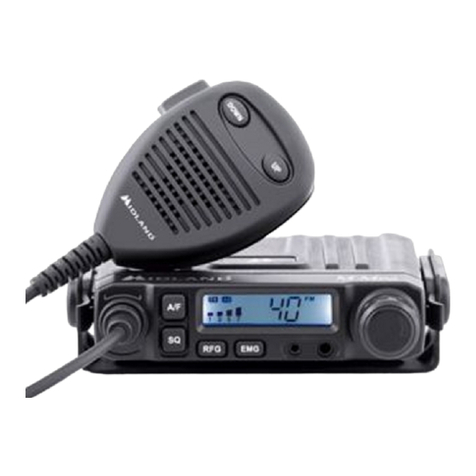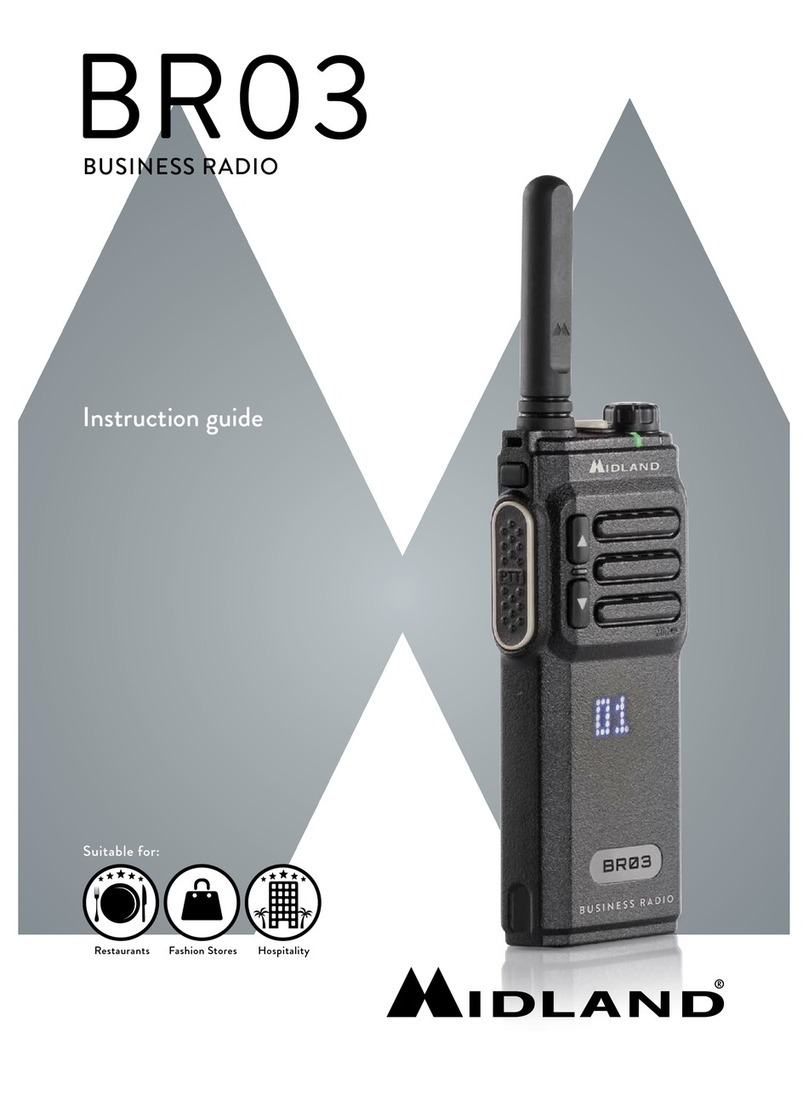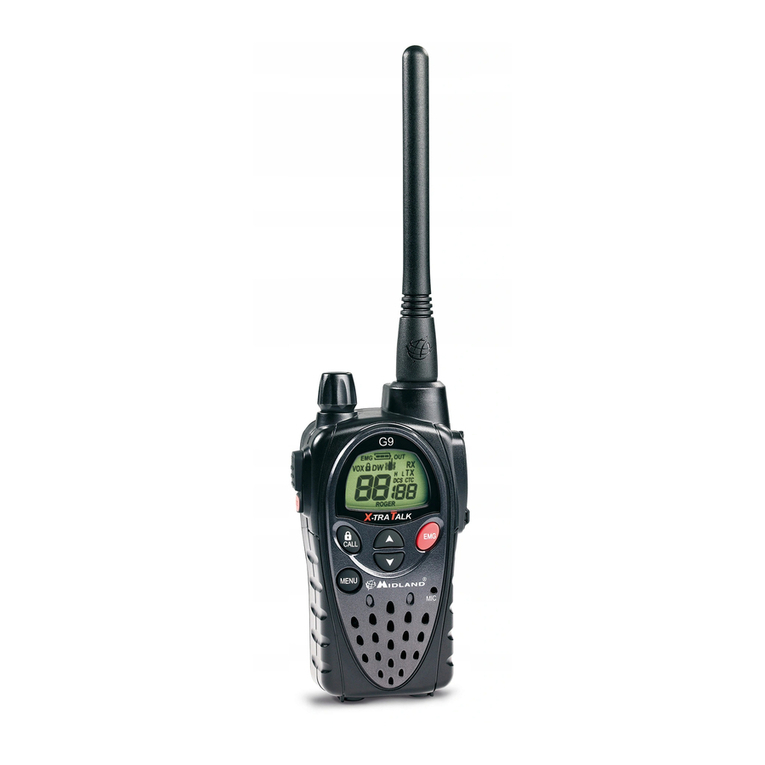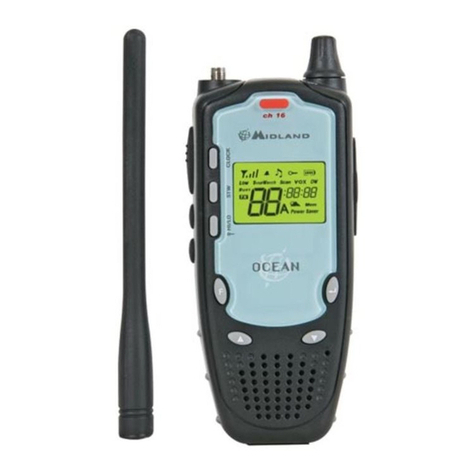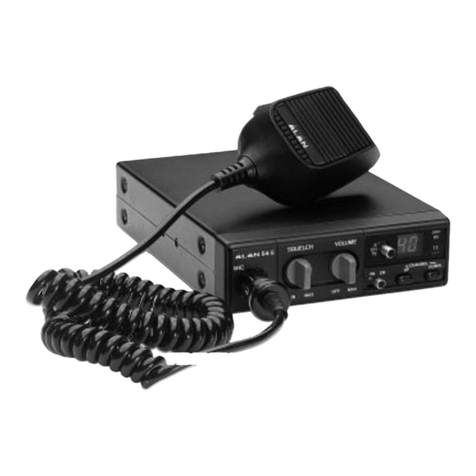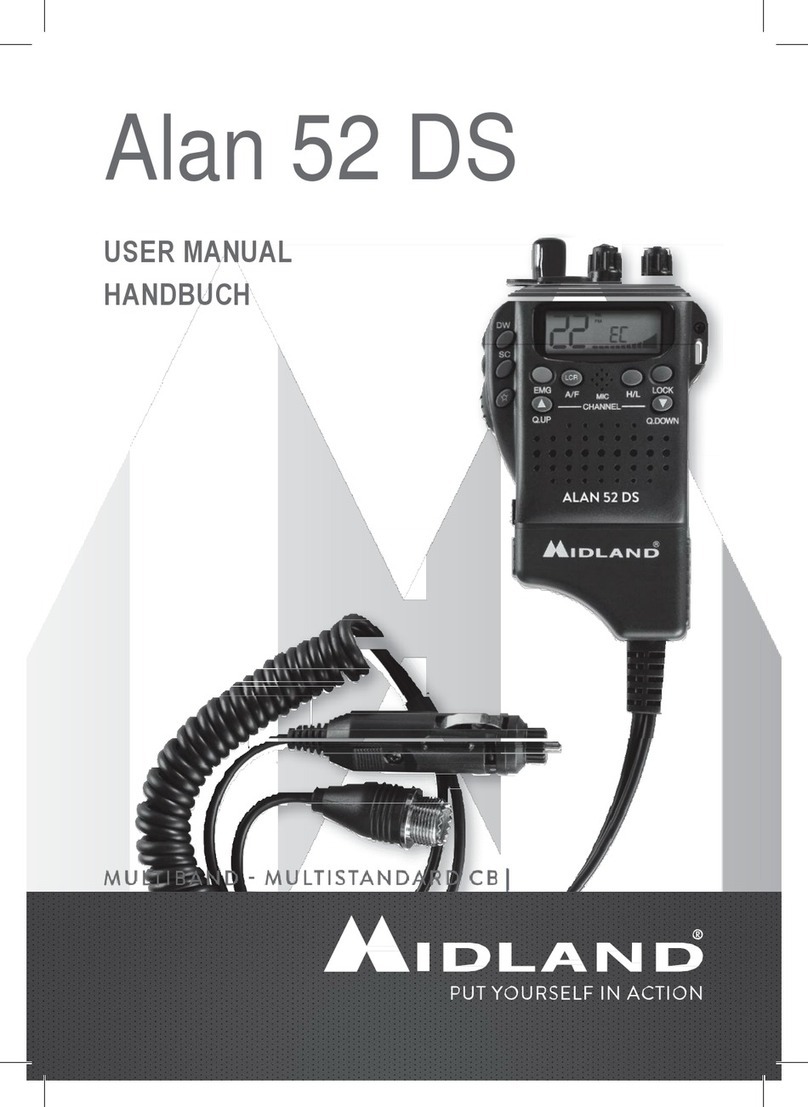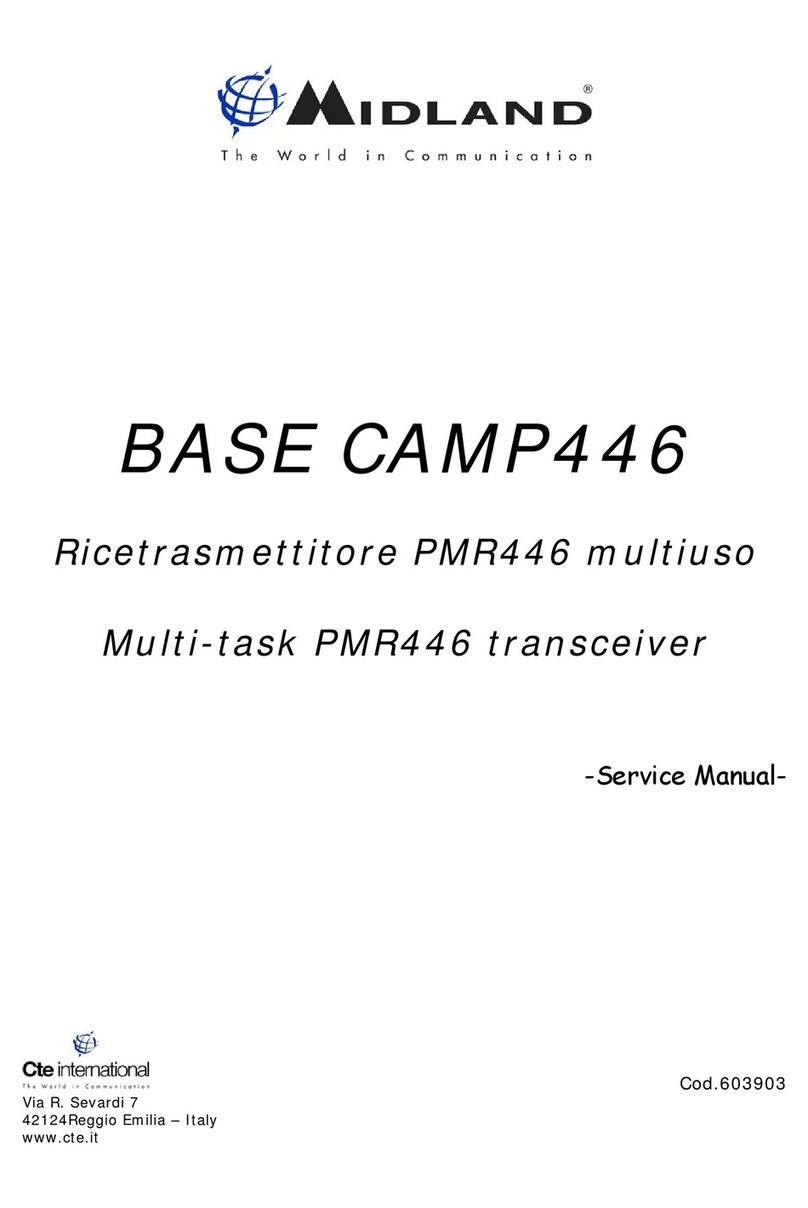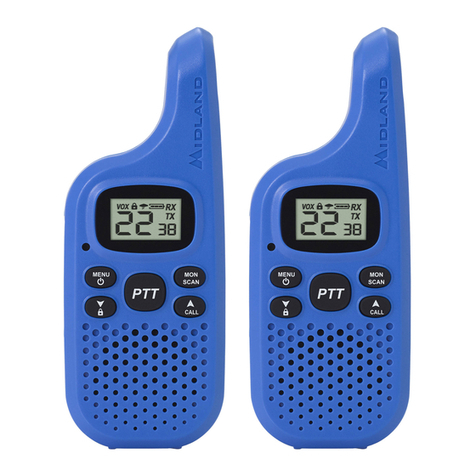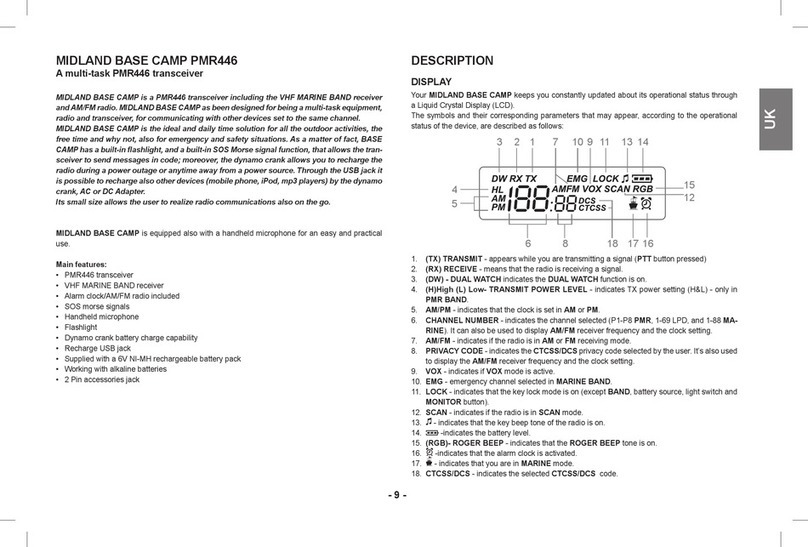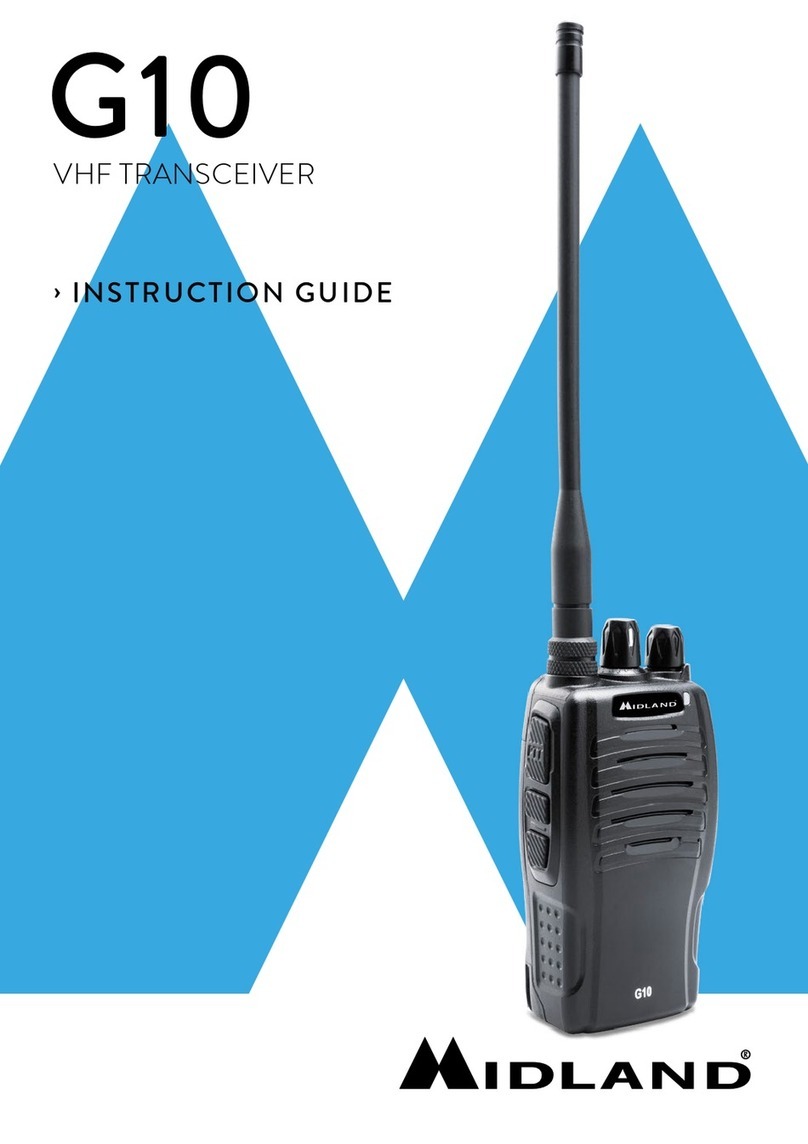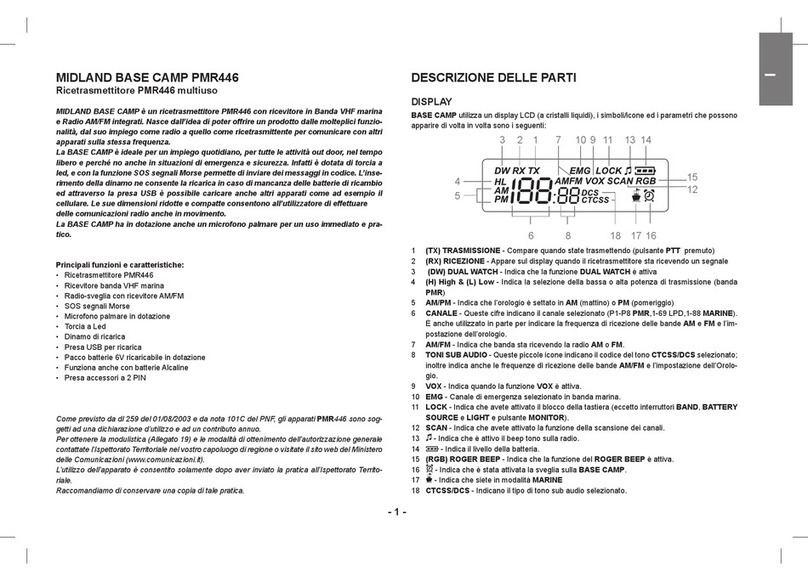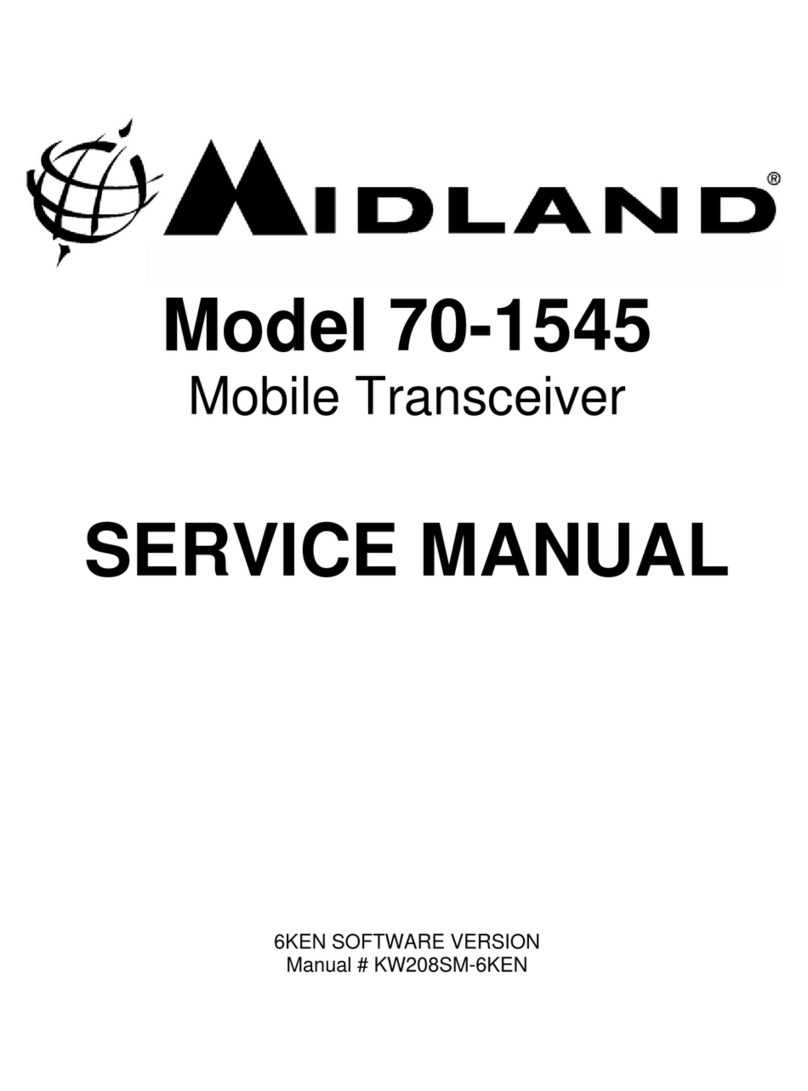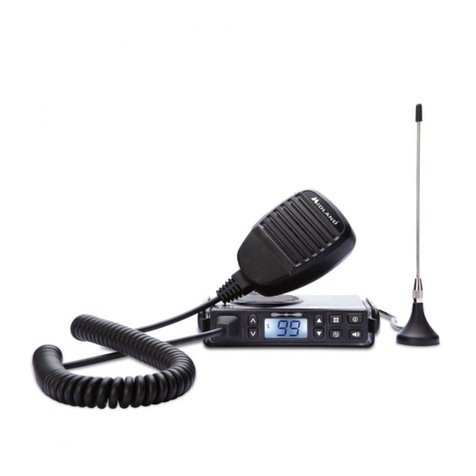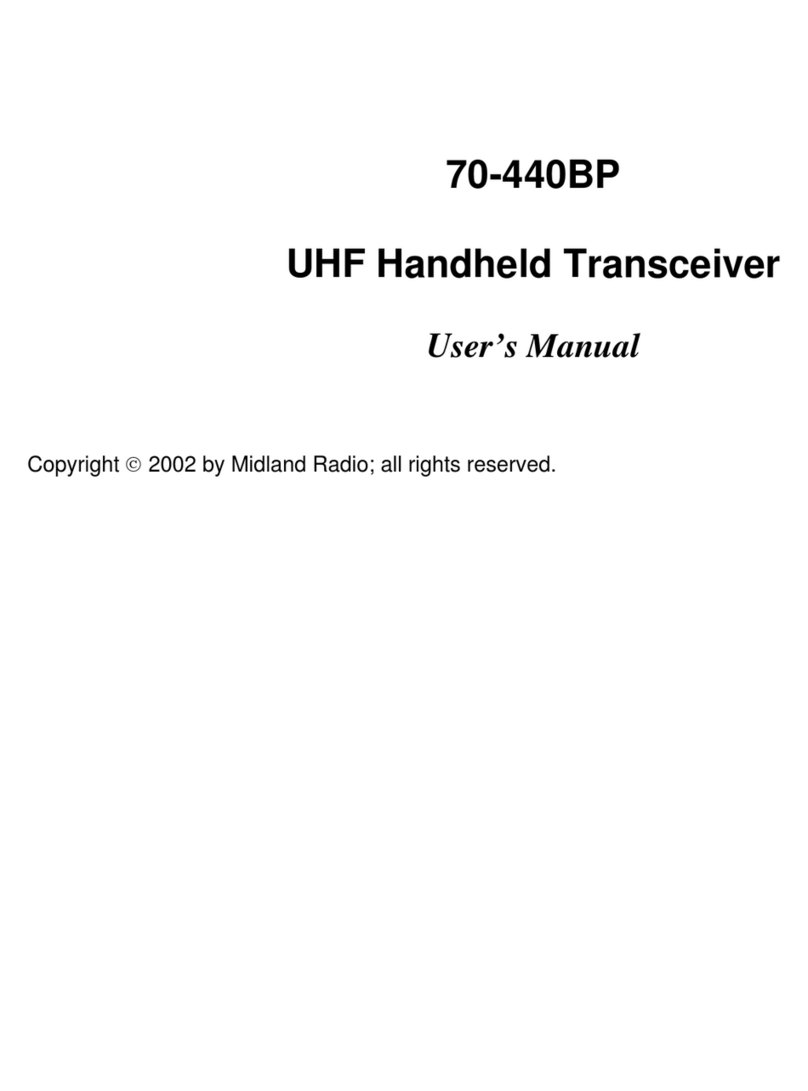4
ITALIANO
4
5. Indicatore “AM/FM”
Indica il modo operativo. FM: LED rosso; AM: LED verde.
6. Indicatore “RX/TX”
Indicatore di ricezione / trasmissione. Posizione RX: LED verde; posizione TX: LED
rosso.
7. Selettore “CB - PA”
Posizione “CB” : in questa posizione, l’apparato é attivo come ricetrasmettitore.
Posizione “PA”: questo modo di funzionamento é possibile solo se viene collegato
un altoparlante alla presa PA sul retro (scritta “PA” visualizzata sul display). In questo
caso, il comando “MIC” viene usato come controllo dell’amplificazione.
8. Tasto FUNC
Questo tasto permette, a scelta dell’utente, di:
• visualizzare il canale o la frequenza operativa premendo “FUNC” per circa 3
secondi.
• attivare le seconde funzioni dei tasti “M” (M1/M5).
M1 / M2 / M3 / M4 / M5:
La radio ha la possibilità di memorizzare e di richiamare all’occorrenza 5 canali a
piacimento precedentemente memorizzati. Per memorizzarne uno, procedere come
segue:
A) Selezionare il canale che si desidera memorizzare tramite il selettore canali o i
tasti “UP/DN” sul microfono;
B) Premere il tasto “FUNC”: il display mostrerà una “F”;
C) Tenere premuto per circa tre secondi il tasto “M1/EMG”: la radio emetterà un
“BIP” e il display mostrerà la scritta “M1”.
Per memorizzare altri canali ripetere i punti A e B e selezionare una diversa
memoria.
Per richiamare un canale precedentemente memorizzato premere il tasto “FUNC” e
di seguito il tasto della memoria desiderata.
I tasti di memorizzazione canali hanno una doppia funzione; qui di seguito sono
descritte le 2 modalità di funzionamento.
9. Pulsante “M1 - EMG”
Permette di memorizzare la memoria numero 1 e di richiamare i canali di emergenza.
La pressione del tasto “M1/EMG” seleziona ciclicamente il canale 9, 19 ed il canale
in uso.
10. Pulsante “M2 - DW”
Permette la memorizzazione della memoria numero 2 e l’attivazione della funzione
DUAL WATCH, che consiste nel rimanere sintonizzati contemporaneamente su due
canali a scelta dell’utente.
Con tale funzione si monitorizzerà ciclicamente un secondo canale. In presenza di un
segnale sul secondo canale, la conversazione sul canale prescelto si interromperà
e il ricevitore commuterà automaticamente sul secondo canale. Il monitoraggio
riprenderà dopo 5 secondi dal cessare del segnale.
Per attivare questa funzione, operare come segue:
- Selezionare il canale desiderato mediante il selettore canali o i tasti “UP/DN” sul
microfono;
- Premere il tasto “DW” per circa 3 secondi: la radio emetterà un “BIP” e sul
display lampeggerà la scritta “DW”.
- Selezionare il secondo canale desiderato tramite il selettore canali o i tasti “UP/
DN” sul microfono;



